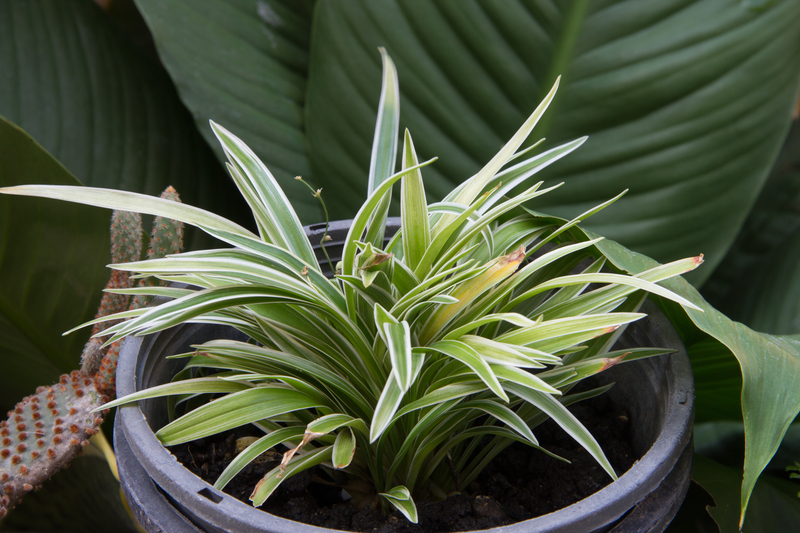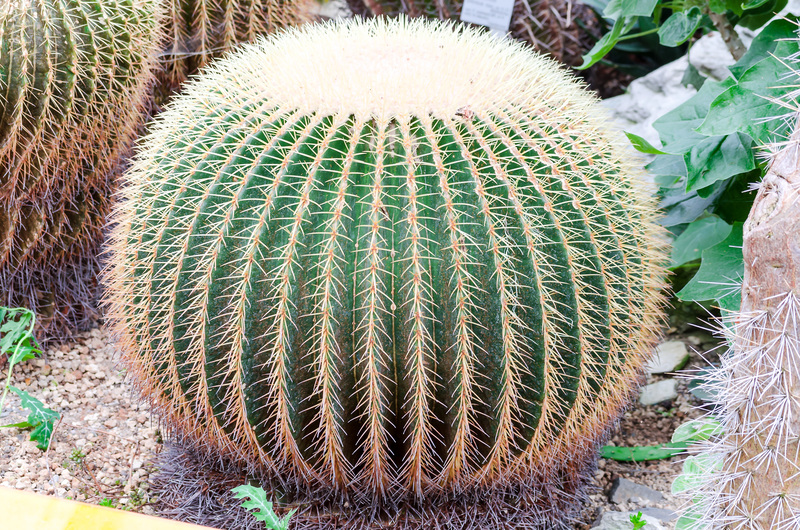Turning Refuse into Fertility: Organic Soil Boost
Posted on 27/06/2025
Turning Refuse into Fertility: Organic Soil Boost
In today's eco-conscious world, transforming what we once called waste into resources is not only wise but also essential for a sustainable future. One area witnessing a green revolution is the process of turning refuse into soil fertility boosters. This organic approach goes beyond traditional gardening--it's about creating a robust, thriving ecosystem right in your backyard. If you're looking for effective, natural ways to improve your garden's productivity and health, dive into this in-depth guide to organic soil boosting through the innovative use of waste.

What Is an Organic Soil Boost?
An organic soil boost refers to the method of enhancing soil fertility, structure, and health by incorporating organic materials--primarily derived from composted refuse. Rather than relying on chemical fertilizers, this approach harnesses nature's cycles, turning kitchen scraps, yard clippings, and other organic waste into valuable nutrients that improve soil's ability to support plant growth. Organic soil treatments provide a holistic boost, rejuvenating tired soil and promoting a healthier, more sustainable environment.
Why Should You Use Refuse to Boost Soil Fertility?
Utilizing refuse as an organic soil booster offers a trifecta of benefits:
- Environmental Protection: Reduces landfill waste and limits greenhouse gas emissions.
- Soil Revitalization: Restores depleted soils with vital nutrients and beneficial microorganisms.
- Sustainable Gardening: Encourages a closed-loop system in which waste is transformed into a valuable resource.
In essence, every banana peel or grass clipping tossed into your compost heap becomes a building block for fertile, living soil, ensuring your garden not only survives but thrives.
Types of Organic Refuse for Soil Enhancement
Not all refuse is created equal; however, a wide variety of home and yard waste can dramatically boost your garden's fertility. Common types of organic refuse include:
- Kitchen Scraps: Vegetable peels, coffee grounds, eggshells, fruit rinds
- Yard Debris: Grass clippings, dry leaves, small branches, wood chips
- Paper Products: Shredded newspaper and cardboard (avoid glossy prints)
- Animal Manure: From herbivores like rabbits, horses, and chickens
- Other Organic Materials: Sawdust, hair trimmings, natural fabrics
Avoid composting meat, dairy, oily foods, and pet waste, as these can attract pests or harbor harmful pathogens.
How Does Turning Refuse Into Fertility Work?
The process of converting refuse into an organic soil enhancer centers on decomposition. Microorganisms, fungi, and invertebrates--like earthworms--break down waste, ultimately producing humus, a dark, nutrient-rich substance. This transformation takes place under the right balance of carbon and nitrogen, moisture, oxygen, and time. Here's how the cycle unfolds:
1. Collection
Gather organic refuse from your kitchen and yard. Store it in a dedicated compost bin, pile, or tumbler.
2. Decomposition
Microbes and other organisms feed on the refuse, breaking it down into simpler compounds. Regularly turning and moistening the pile speeds up the process.
3. Maturation
After several weeks or months, the refuse becomes fully composted--dark, crumbly, and earthy-smelling. At this stage, it's ready to be used as a soil booster.
4. Application
Incorporate the mature compost into your garden beds, mix it with existing soil, or use it as mulch. Its nutrients feed plants and improve soil structure.
Benefits of Organic Soil Boost from Refuse
Harnessing waste for soil improvement offers a range of benefits:
- Increases Soil Fertility: Infuses the soil with essential nutrients like nitrogen, phosphorus, and potassium.
- Improves Soil Structure: Promotes good drainage and aeration, reducing compaction and erosion.
- Boosts Microbial Activity: Fosters a rich ecosystem of beneficial microbes that aid plant growth and disease resistance.
- Enhances Water Retention: Compost-rich soils retain moisture more effectively, reducing the need for frequent watering.
- Mitigates Pollution: Prevents harmful runoff of chemical fertilizers into waterways.
- Reduces Waste: Lessens the volume of garbage sent to landfills and reduces your carbon footprint.
The environmental and economic advantages are undeniable--organic soil boosting is a win-win practice for modern gardeners.
The Science Behind Soil Fertility from Organic Refuse
Why does composted refuse make such an effective organic soil boost? The answer lies in the biological and chemical processes at play:
- Humus Formation: As refuse breaks down, it forms humus, which acts as a reservoir for plant nutrients.
- Mineralization: Microbes convert organic matter into mineral forms--nitrogen becomes nitrates, phosphorus becomes phosphates--making them accessible to plants.
- pH Stabilization: Compost helps buffer soil pH, making it less susceptible to acidity or alkalinity spikes.
- Disease Suppression: Diverse microbe populations outcompete pathogens, minimizing the chance of soil-borne diseases.
Simple Steps to Turning Refuse Into an Organic Soil Booster
Ready to create your own organic soil fertility enhancer from waste? Follow these key steps:
Step 1: Build Your Compost System
Choose a method that fits your space and needs:
- Compost Pile: Great for larger yards; simply heap organic materials in a corner.
- Compost Bin: Enclosed; controls moisture and heat, deterring pests.
- Tumbler: Rotating barrel for easy mixing; speeds up decomposition.
- Vermicompost: Uses worms to break down kitchen scraps, ideal for small spaces.
Step 2: Balance Your Waste
Compost works best with a balance of "greens" (nitrogen-rich) and "browns" (carbon-rich). A general rule is 2-3 parts browns to 1 part greens:
- Greens: Vegetable scraps, coffee grounds, fresh grass clippings.
- Browns: Dry leaves, straw, shredded paper, sawdust.
Step 3: Add Oxygen and Moisture
Turn your compost pile regularly to supply oxygen, and keep it as damp as a wrung-out sponge. These steps keep microorganisms active and decomposition rolling.
Step 4: Monitor and Harvest
Compost is ready when it's dark, crumbly, and no longer resembles its original materials--usually within 2-6 months, depending on your process.
Step 5: Apply to Your Garden
- Work into soil: Before planting, dig 2-4 inches of compost into your bed.
- Top-dress: Spread around established perennials and shrubs.
- Mulch: Apply a thin layer on top of soil to suppress weeds and retain moisture.
Innovative Approaches: Bokashi, Biochar, and More
Beyond traditional composting, several advanced methods can amplify your organic soil boosting:
Bokashi Composting
Bokashi uses beneficial microbes (lactic acid bacteria) to ferment kitchen waste--even dairy and meat. The result is a pre-compost that swiftly decomposes in the soil, delivering fast, effective fertility.
Biochar
Biochar is a stable form of charcoal made from plant matter. Mixing biochar into compost enhances microbial activity, increases nutrient retention, and helps sequester carbon in your garden.
Hugelkultur Beds
Layering logs, twigs, and organic debris under soil mimics nature's decomposition process, slowly releasing nutrients and improving moisture retention for years.
Worm Castings
Vermicomposting allows you to harvest worm castings--a nutrient powerhouse that super-charges any soil booster.
Common Challenges and How to Overcome Them
Even the best gardeners can run into challenges when turning refuse into soil fertility. Here's how to resolve some common issues:
- Bad Odors: Usually too many "greens" or poor aeration. Add dry leaves and turn the pile.
- Slow Decomposition: Chopping materials into small pieces, ensuring a proper mix, and maintaining moisture speeds up the process.
- Pests: Avoid composting meat or dairy, and use animal-proof bins if necessary.
- Too Wet or Too Dry: Adjust by adding more browns (for excess moisture) or watering lightly if too dry.
Tips for Maximum Organic Soil Boost
- Rotate your compost materials to ensure even breakdown and nutrient diversity.
- Test your soil periodically to monitor nutrient levels and adjust compost application rates.
- Incorporate cover crops in off-seasons to further enrich your soil's organic matter.
- Practice crop rotation for healthier soils and to reduce the disease build-up.
- Share or swap compost in your community; collective efforts multiply benefits for everyone.
Organic Soil Boost: FAQs
- Is composting organic refuse safe for all gardens?
Yes, as long as you avoid composting diseased plants, meat, dairy, and pet waste. Properly matured compost is safe and beneficial. - How long does it take for refuse to become usable compost?
With good balance and maintenance, most compost is ready in 2 to 6 months. - Will using organic refuse attract pests?
Proper management and avoidance of questionable items minimize pest problems. - Can I use compost as the only fertilizer?
Compost provides a broad range of nutrients, but heavy feeders (like tomatoes) may need supplemental organic fertilizers for best results.

The Future of Soil Fertility: A Circular Vision
Organic soil boosting by recycling refuse is more than just a gardening trend; it is a paradigm shift toward a sustainable, regenerative future. Each bit of kitchen or garden waste you compost not only benefits your own patch of earth but also echoes outward--reducing the burden on landfills, decreasing environmental pollution, and supporting the global movement toward greener, more resilient food systems.
By embracing the philosophy of turning refuse into fertility, you become a steward of the soil--a vital link in the cycle of life. The next time you peel a vegetable or trim the hedge, remember: you're holding the seeds of fertility in your hands.
Conclusion: Cultivating Abundance with an Organic Soil Booster
Turning refuse into an organic soil boost is a practice that blends environmental responsibility with the joy of nurturing life. Whether you're a seasoned gardener or just starting out, incorporating these methods into your routine will reward you with healthier plants, tastier produce, and a deeper connection to nature's rhythms. Start today--your garden, your community, and the planet will thank you for it.

